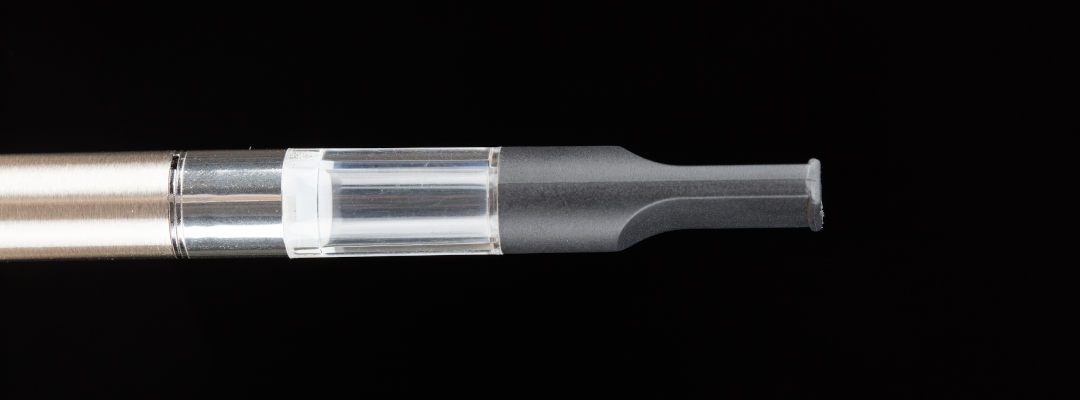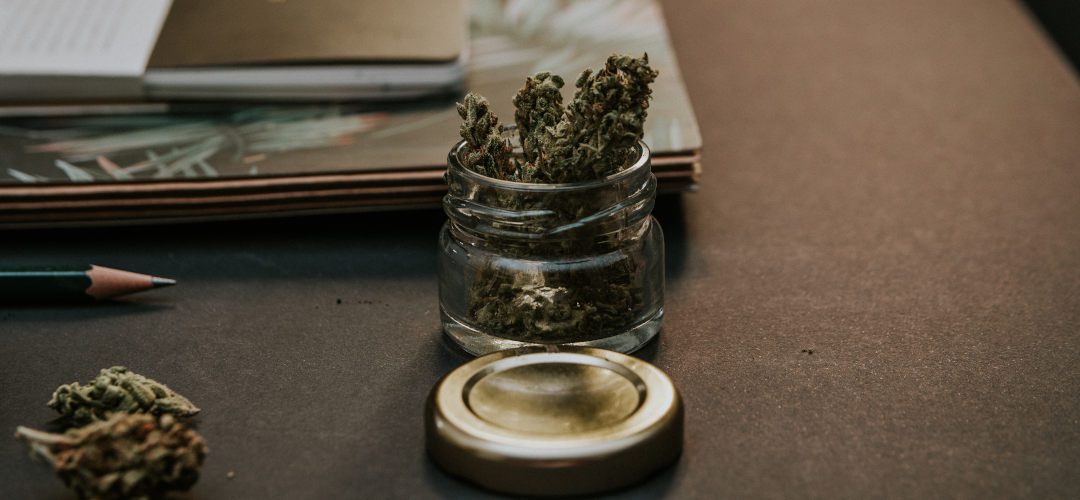Posted by guest.writer
5 years ago / October 16, 2019
Column: Why Vape Bans Are Adding Fuel To The Fire

![]()
Click on any subject to jump to that section
Contents:
- The Situation
- How Did We Get Here?
- Why Vitamin E Acetate?
- Is Vitamin E Acetate The Only Culprit?
- E-Cigarettes: The Other “Vape” Under The Microscope
- Why Vape Bans Will Only Perpetuate The Issue
- Where Do We Go From Here?
![]()
The Situation:
The legal cannabis vape industry has been an epicenter of optimism and activity over the last two years. Over the past two months, however, following the reports of more than 1,000 vape-related illnesses and over 20 vape-related deaths since late August, it has become clouded by fear, confusion, and anxiety.
Three isolated issues—(a) youth addiction to flavored e-juices, (b) tainted e-cigarette hardware, and (c) contaminated black market THC oils—have been lumped into one “epidemic” by the media. This has been accompanied by the widespread dissemination of vape misinformation and opinions being masqueraded as facts on social media, blogs, and certain news outlets. The fallout has been swift and, in many cases, extreme. The FTC, CDC, and FDA are investigating these matters with the help of state and local health departments across the U.S. Hundreds of hardware, oil, and extraction companies have asserted their innocence in issued public statements, stressing the importance of purchasing tested, compliant products through legal channels. A general heightened sense of apprehension and confusion for vape as a category is currently permeating consumers and most recently, a new troubling trend has emerged:
temporary bans on cannabis vaporizers, flavored tobacco, and e-cigarette products in several major markets, including New York, California, Massachusetts, and Michigan.
What are the factors that have led to these recent developments and incidents and how will responses from various levels of government and regulatory bodies impact consumers and the industry at large?
How did we get here?
As Leafly traced out in its thorough article, the vast majority of these THC vape-related respiratory illnesses have stemmed from a new additive that has recently made its way into the black market. Low doses of the additive, known scientifically as tocopheryl-acetate or more colloquially as vitamin E acetate, have been used for decades in legal cosmetic and dietary supplement products. In late 2018, however, cannabis oil producers operating in the black market realized that this additive could be used to thicken unregulated formulations.
Although no firm link has been established yet, the early findings of investigators largely point to vitamin E acetate being directly responsible for nearly half of THC-related vape illnesses, including lipoid pneumonia, a rare condition caused by fat molecules entering the lungs.
Why Vitamin E Acetate? Aren’t there other, less harmful additives?
There are several other additives used by licensed cannabis oil manufacturers and extractors, including polyethylene glycol (PEG), propylene glycol (PG), vegetable glycerin (VG), and medium-chain triglycerides (MCT). These additives have been used for years in e-cigarettes without triggering major health concerns and are now used by licensed, compliant cannabis oil producers as common cutting agents to thin viscous cannabis oils. Extracted cannabis oils, in their rawest forms, are thick and crude like honey or molasses and do not vape efficiently in most devices; the general rule of thumb for cannabis oils is that higher-quality formulations tend to be more viscous than lower-quality formulations. As such, thinning additives are integral ingredients when producing vape-conducive cannabis oils.

Cannabis oil producers operating in the black market also use these cutting agents but for different purposes. Rather than thinning viscous, high-quality extracts with these additives, they use them to dilute low-quality formulations and stretch the yields of their products. The process is as inexpensive as it is dishonest. Black market consumers have caught onto this tactic and adjusted their purchasing habits to actively seek out cartridges filled with more viscous solutions. But black market cannabis oil producers and distributors are savvy, too, and have responded to this consumer trend by thickening these diluted, runny solutions with vitamin E acetate in much the same way that you would thicken gravy or sauce by adding cornstarch. This has resulted in consumers being unable to distinguish low-quality oils from high-quality ones.
Is Vitamin E Acetate The Only Culprit?
Although vitamin E acetate has been found in nearly half of all contaminated cartridges, including almost every reported case of vape-related illness in New York, it is not the only factor causing these respiratory diseases and deaths.
CannaSafe, an independent testing facility in California, recently tested a variety of black market cartridges for contaminants and found high levels of the chemical myclobutanil in each one. Myclobutanil is the principal ingredient in Eagle 20, a fungicide commonly used to rid crops of powdery mildew and mold. It is often applied to fruits and vegetables in low doses and is generally not harmful for human consumption if consumed via food or drink. The fungicide is extremely dangerous and potentially lethal, however, if inhaled, as myclobutanil converts to hydrogen cyanide when heated.
For this reason, California’s cannabis cultivators are not allowed to use more than 0.02 parts per million of the fungicide to treat crops, while cultivators in Oregon, Washington, Colorado, and Canada are prohibited outright from using any quantity of myclobutanil whatsoever. Nonetheless, recent independent tests have confirmed that at least some of California’s tested black market cartridges contained 7,300 times the legal limit of permitted myclobutanil. This is a troubling discovery, given that myclobutanil seems to be present in a majority of black market oil formulations and that nearly 80% of California’s cannabis sales come from the black market.
E-Cigarettes: The Other “Vape” Under The Microscope
While the cannabis industry has grappled with this acute spike in vape-related issues, e-cigarettes have also made their way into the spotlight for reasons that aren’t exactly clear. Of the 1000+ vape-related illnesses reported, 17% have allegedly been the result of nicotine e-cigarette consumption exclusively, although no common chemical linking each case has yet to be identified.
Research has shown that some chemicals used in flavored e-juices can result in lung damage, such as cinnamaldehyde and diacetyl, and that at least some black market e-cigarette hardware contain high levels of cadmium, a toxic chemical used by welders to fuse metals together. But several other factors must be considered before any firm conclusions are made. These include whether some of those affected by nicotine-related illnesses smoked cigarettes heavily before switching to vaporizers and if some of the patients who claimed to have exclusively smoked e-cigarettes may have also secretly used some black market cannabis vapes and were too embarrassed, for whatever reasons, to disclose that to health authorities.

The fact that e-cigarettes, flavored e-juices, and cannabis vapes are all undergoing increased scrutiny at the same time—and have been grouped into one central “vape epidemic” by the media—looks to be an inconvenient coincidence for all parties. The FDA has been looking at e-juice manufacturers with increased scrutiny for some time now due to the addictive nature of flavored pods and the aggressive, youth-targeted marketing practices that some of these companies employ. Nonetheless, multiple independent studies have shown that e-cigarettes look to be a less damaging alternative to smoking cigarettes and prior to August 2019, incidents of e-cigarette related illnesses were not reported with such veracity.
That’s not to say that e-cigarettes or e-juices are completely safe; they certainly pose their own risks and are known to be as addictive as cigarettes, if not more. But media outlets and politicians alike have linked a majority of these respiratory illnesses with nicotine-based products, and that is simply not the case. The situation is far more complex and the existing uncertainty underscores the need for further study of these two sectors that have grown in immense popularity in a very short period of time.
Why Vape Bans Will Only Perpetuate The Issue
Statewide e-cigarette and cannabis vape bans are not the solution to this problem even if the intentions behind them are, on the surface, utilitarian and pure. In reality, moratoriums will only worsen the issue and have adverse effects on consumers, brands, and the legal e-cigarette/cannabis vape sectors going forward. Here’s why:
There has been a statistically negligible amount of illnesses stemming from legally purchased THC cartridges, which isn’t surprising given the number of regulatory tests these units must undergo before they can be placed on retail shelves. At the same time, nearly every reported cannabis vape-related illness has resulted from an unregulated black market cartridge loaded with either vitamin E acetate, myclobutanil, or an additive/contaminant yet to be identified. Bans would close the only existing avenue to purchase legal cannabis vaporizers and e-cigarette products, forcing consumers to do exactly what the bans themselves are designed to prevent: the purchasing of products or devices from the black market. It stands to reason that bans would only prolong an already tenuous situation and lead to a continued rise in the number of respiratory illnesses and deaths stemming from unregulated product.
How regulatory authorities in the few jurisdictions that have imposed bans did not stop to consider the short and long-term consequences is alarming. One wouldn’t treat a twisted ankle by deliberately immobilizing both feet. So why shut down the only cannabis cartridge producers and e-cigarette vendors in these regions that are adhering to regulations and producing/shelving safe products for their consumers?
These temporary bans are also blurring the distinction between the legal and black markets because they lump in businesses, brands, and retailers who have played by the rules with those who have not. This breeds suspicion and distrust in consumers’ eyes, who are likely to associate the legitimate brands and businesses subjected to the moratorium with the illicit brands that caused these illnesses in the first place. Moratoriums will also scare newcomers away from the easiest and safest cannabis consumable entry point to the sector, forcing consumers who have switched to vaporizers for health reasons to regress back to dried flower and cigarettes.
Where Do We Go From Here?
This is not the end of the cannabis vape or e-cigarette industries by any means. Growing pains are to be expected in any booming nascent industry, and these sectors are no exception. The reality is, though, that these newer methods of cannabis and nicotine consumption are here to stay, and those who have grown accustomed to them or prefer them to smoking dried flower or tobacco are far more likely to wait out the bans or seek products on the black markets in the interim than they are to quit vaping entirely.
If anything, this situation is more likely to serve as a wakeup call for the entire industry.

It’s a wakeup call for cannabis consumers in the U.S. and abroad, concerning the importance of buying legal, regulated products from compliant manufacturers, brands, and retailers. Because there’s no accurate way of gauging the quality and ingredients of black market cannabis oils, consumers will need to do their due diligence before purchasing any cartridges to confirm that they are buying from a trustworthy source and that the oil has passed all requisite testing.
It’s a wakeup call for cannabis oil producers and e-cigarette manufacturers to go above and beyond in their efforts to be upfront with consumers. This transparency could take many forms, from disclosing compliance certifications and complete lists of solvents and ingredients used to putting more money into their R&D departments to identify natural additives and materials that can be used in the production and manufacturing processes. We’re already seeing some companies reintroduce terpenes and other natural additives into their formulations. Hopefully, this trend gains momentum and becomes an industry-standard going forward.
Finally, it’s a wakeup call for the federal government to legalize recreational cannabis across the entire country. It is high time for the implementation and enforcement of federal cannabis regulations and safety standards, and nationwide legalization is the only way this will happen. Lobbying for this initiative is already underway with more than 800 cannabis industry leaders recently signing a letter to Congress, pleading for the removal of cannabis from the Controlled Substances Act.
The support and groundwork for legalization already exist. Not only has more than one-fifth of the U.S. already legalized the recreational use of cannabis, but a thorough survey from earlier this spring revealed that 80% of Americans are in favor of nationwide legalization and the tax revenue it would garner.
Better days—ones of cannabis education, regulations, oversight, and transparency—are on the horizon. If we all move in unison toward this common goal, it won’t be long until these issues are nothing more than distant memories and reminders of just how quickly a few bad apples can spoil an entire bunch.
![]()
*This article is an opinion piece written by a third-party contributor.
Filed Under:
Tagged with:
Interested in our products?
Contact us to find out how you can carry the most reliable vape hardware solutions on the market.
General Requests
Logistics
